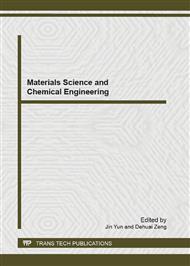p.513
p.519
p.524
p.530
p.535
p.541
p.549
p.554
p.557
Characterization and Testing of the Locally Fabricated Encapsulants in Egypt for Commercial Photovoltaic Modules Production
Abstract:
In this work, different locally fabricated adhesive materials were examined to be used as an encapsulant for producing of photovoltaic modules. All the selected samples were characterized by FT-IR spectroscopy, TG instrument, UV-VIS spectrophotometer and electrical resistance meter. In addition, all the samples under investigation were examined by aging tests according to IEC standards for testing their stability and durability. The polymethacrylate material with UV stabilizer can be considered as an excellent commercial candidate for photovoltaic module encapsulant due to its high optical transmission, good adhesive strength with the glass, high photo-stability, high thermal stability and high electrical insulation (electrical resistance).
Info:
Periodical:
Pages:
535-540
Citation:
Online since:
May 2013
Authors:
Price:
Сopyright:
© 2013 Trans Tech Publications Ltd. All Rights Reserved
Share:
Citation:


